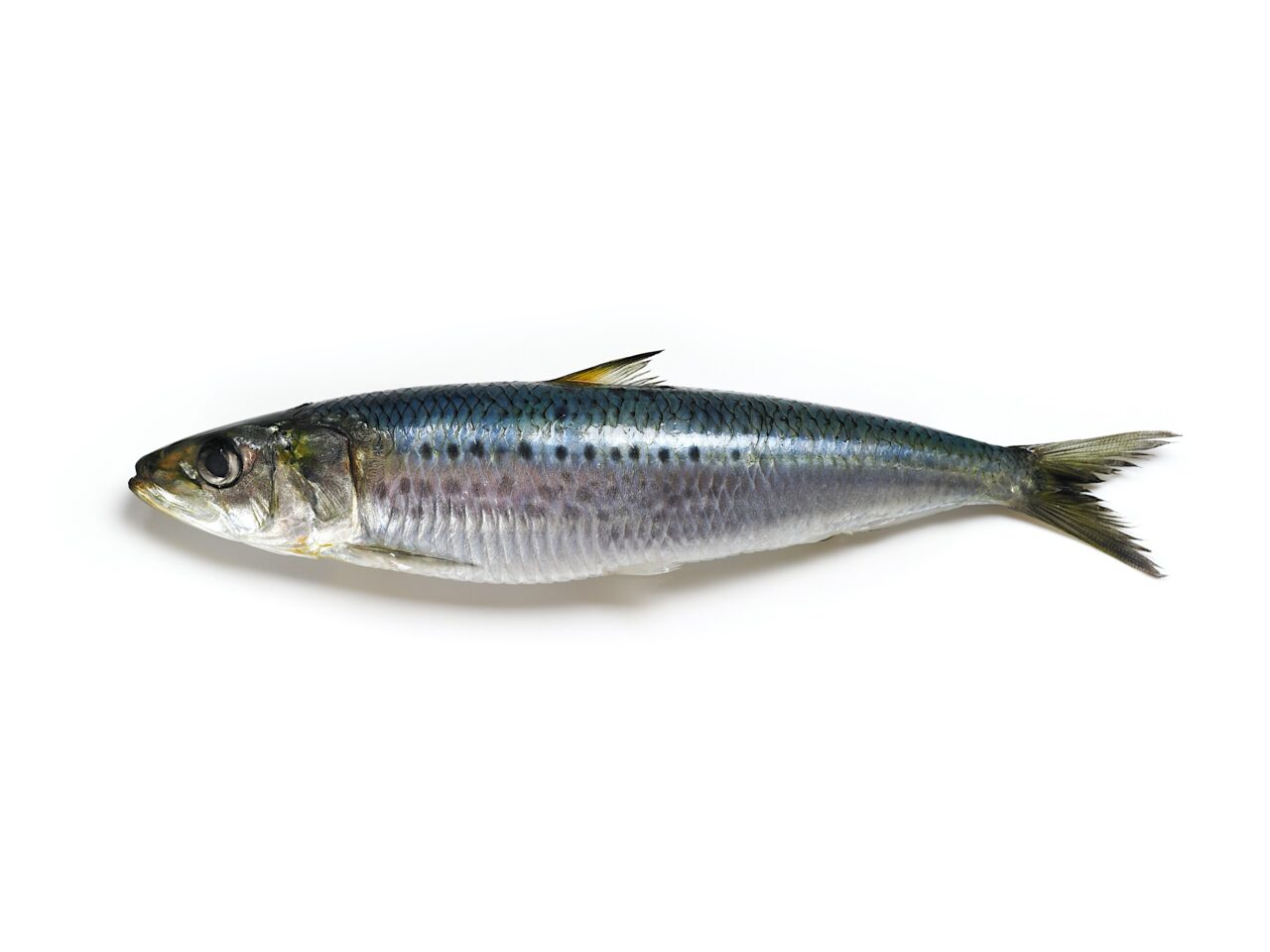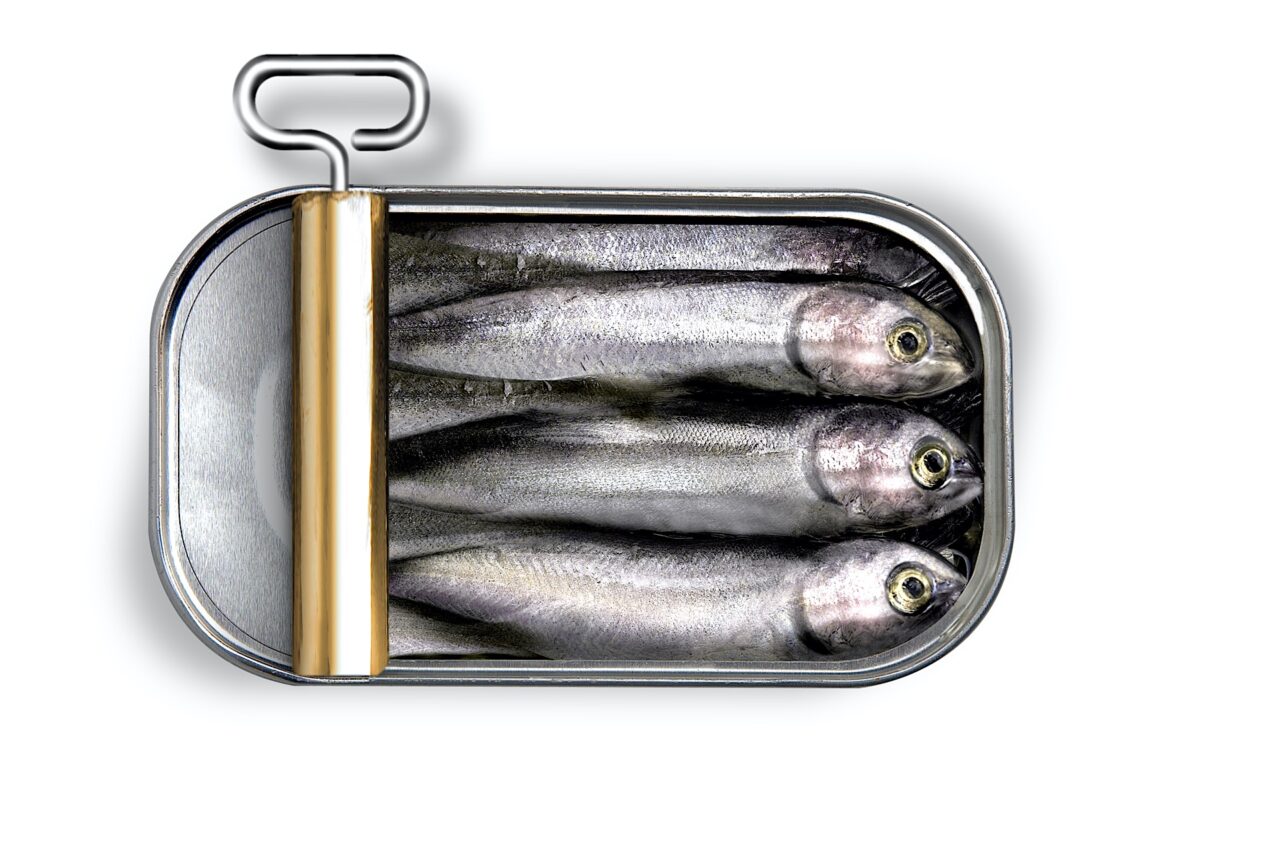Nederlands
English
Deutsch
Français
Sardines, also known as pilchards, are small, herring-like fish mainly popular in countries around the Mediterranean Sea. Although this little fish is a common ingredient in kitchens, especially in southern countries such as Spain and Portugal, people in the Netherlands seem to find it somewhat ‘exciting’ to work with this small, bony fish.
However, that is not the only reason why sardines are not (yet) very popular in the Netherlands. One of the main reasons dates back several decades when the beloved sardine suddenly disappeared. We will explain the cause and how this was solved in detail in this article about sardines. Furthermore, we will tell you what to look for as a buyer to ensure that you buy genuine and quality sardines and not a similar fish sold under the same name.
The topics covered in this article about sardines include:
We have previously mentioned sardines in our article about Sprat and the herring family. In that article, we described the minor differences in detail – from a biological point of view – between herring, sprat, sardines and anchovies, all herring-like fish. The sardine is a ray-finned fish with a greenish-brown back and silver-coloured flanks. The fish owes its name to the island of Sardinia, where it once existed in large numbers.

Just like sprat, sardines are very similar to herring, only smaller. A herring grows to an average of 30 centimetres. In comparison, a sardine only grows to a maximum of 25 centimetres – sprat, on the other hand, only measures up to 18 centimetres. Sardines resemble herring in both their appearance and salty taste, and sardines have large scales that are easy to remove. This small fish reaches an average age of 15 years.
Sardines have been consumed for centuries, especially in countries such as Spain and Portugal. Sardines are mainly eaten whole or canned and served with potatoes, salad or just on bread. In Portugal, sardines have inspired complete works of art, and they are an integral part of Portuguese culture.
These days, you can still find this popular fish here, mainly canned. And these cans are not only popular because of their contents but also because of their packaging: the bright colours and historical pictures of the canned fish are completely different to what we are familiar with here in the Netherlands.
The origin of the trend for canned sardines is a fascinating story. It arose out of necessity. In the early 1800s, preserving food for a longer period of time was crucial during long periods of war. Therefore, Napoleon offered a reward for anyone who could devise a technique for preserving food.
After years of experimenting, a French confectioner, Nicolas François Appert, came up with the first solution: preserving food in airtight glass bottles meant it could be kept much longer. However, glass bottles were not very handy and difficult to transport. Pierre Durand then invented the first preserving can in 1810, extending the shelf life of sardines by 20 years in one go. And the rest is history…

Today, canned sardines are still a top-rated product. Of all the sardines eaten in the Netherlands, the majority are canned. Canned sardines are available in all shapes and sizes, such as sardines in olive oil and canned tomato sardines. Canned sardines are already thoroughly cleaned and filleted and thus bone-free, which many people appreciate. Additionally, these sardines are ready-to-eat and therefore immediately consumable.
In countries such as Portugal, Spain and France, canneries had popped up everywhere for years. Fresh sardines were processed into canned food in hundreds of factories. Then, all of a sudden, sardines disappeared – due to overfishing. In those days, strict measures against overfishing did not yet exist, and there was no talk of sustainable and/or innovative fishing techniques.
For this reason, alternatives were devised to meet the continuing demand. Countries started using other fish species for canning and selling them as sardines. In Canada, for example, they used herring, while in Peru, they canned anchovies as sardines.
This still happens today, so figuring out which are sardines and which aren’t can be a bit confusing. So, you might think that you are buying a can of sardines, when in fact it contains anchovies! Altogether, twelve species of fish are sold as canned sardines. These twelve species can be divided into the four categories mentioned earlier: sardines, herring, anchovies and sprat.
To know whether a can contains real sardines, you have to look at the Latin name of the fish, because nowadays, producers are legally obliged to state the Latin name when a can of ‘sardines’ actually contains a different fish species. If there is no Latin name on the can, it contains real sardines. The Latin names for herring, anchovies and sprat are consecutively Clupea harengus, Engraulis encrasicolus and Sprattus sprattus. The Latin name for sardines is Sardina Pilchardus.
Sometimes, the names on the labels are also slightly adapted, such as canned sprat sold as Norwegian sardines, and in Canada, canned herring is labelled as Canadian style sardines. This makes it possible to distinguish between the different (quality) varieties, but as a consumer and also as a buyer, you have to be aware of this.
As a result, sardines and especially their image, have had to endure a lot. This little quality fish was often short-changed by cheaper fish varieties and lower-quality fish products. This is the main reason why sardines never became a popular fish product in the Netherlands. Only a small percentage of all sardine brands in the Netherlands focuses on a high-quality product instead of just making a profit. And that is truly a mortal sin for such a deliciously salty and easy-to-use fish.
At Mooijer-Volendam, we only sell the highest quality sardine products. This means that all our sardines are real – Sardina pilchardus – sardines. We have different kinds of canned sardines, whole frozen sardines and real fresh sardines. You will definitely taste the difference
Sardines are still of great commercial importance to the fishing industry. Since the 1970s and 1980s, sardine populations have fortunately recovered, and the fish species are no longer on the IUCN Red List. Therefore, sardines are a responsible and sustainable fish variety.
Like sprat, sardines are caught wild throughout the year. This age-old fish can be found in the Mediterranean Sea, up to England and Ireland. Sardines swim in schools at a depth of ten to one hundred metres. This varies per season and time of day: during the day, they swim deeper than at night.
Fishing for sardines has no impact on the seabed because they swim in dense schools and do not live on the sea bed. Moreover, the fishing method is very selective. Fishermen never fish for sardines in the spawning season, and the nets are designed to allow (too) small fish to escape. That way, the sardine population remains healthy.
Are you a buyer looking for genuine Sardina pilchardus sardines? Then you have come to the right place! As a specialised fish wholesaler, Mooijer-Volendam sets high standards for its quality products. For this reason, we only sell genuine and sustainable sardine products that are MSC-certified.
Mooijer-Volendam is a solid and flexible supplier for the hospitality industry, fishmongers, and specialised retailers and shops. Our customers are aware of our quality vision, and that is why they keep coming back to us. Will you too?
Are you curious about all our sardine products?